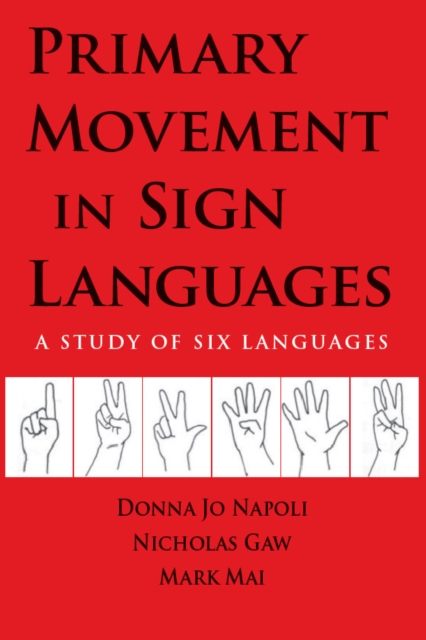
Primary Movement in Sign Languages : A Study of Six Languages PDF
by Napoli Donna Jo Napoli, Mai Mark Mai, Gaw Nicholas Gaw
Description
Is it possible to identify sign languages by their prosody, that is, the rhythm and stress of sign production, and then determine if they are related to each other or other sign languages? If so, reasoned authors Donna Jo Napoli, Mark Mai, and Nicholas Gaw, perhaps they could offer such identification as a new way to typologize, or categorize sign languages by their structural features. Their new collaboration Primary Movement in Sign Languages: A Study of Six Languages traces the process and findings from this unique investigation.
Resolving on the direction of movement as the prosodic factor to track, they began their research by comparing five sign languages: American Sign Language (ASL), British Sign Language (BSL), Italian Sign Language (LIS), French Sign Language (LSF), and Australian Sign Language (Auslan). They soon discovered that the languages in their study clustered with respect to several characteristics along genetic lines, with BSL and Auslan contrasting with LSF, LIS, and ASL. They learned that sign languages with the same geographic origin evolved differently when relocated, and they isolated differences in each individual sign language. They compared four of these established sign languages with the newly emerging Nicaraguan Sign Language (NSL), with the exception of ASL due to their past close contact, thereby validating their work as the first study to identify sign language relationships without depending on grammar.
Information
-
Download - Immediately Available
- Format:PDF
- Pages:222 pages
- Publisher:Gallaudet University Press
- Publication Date:31/05/2011
- Category:
- ISBN:9781563684920
Information
-
Download - Immediately Available
- Format:PDF
- Pages:222 pages
- Publisher:Gallaudet University Press
- Publication Date:31/05/2011
- Category:
- ISBN:9781563684920






